Museum “Kray Dolgorukovsky” Ivan Aleksandrovich Khristenko (1930 - 2012)
About the Artist/Site
The small Russian village of Dolgorukovo in the Lipetsk region in Russia, some 425 km south of Moscow, houses a local/regional museum that is distinguished because all indoor decorations and all built structures in the garden were produced single-handedly by the director of the museum, Ivan Aleksandrovich Khristenko.
Nothing initially indicated that Khristenko would become director of a museum. He was born on September 14, 1930 in the Prikhidki village in the Poltava region (currently part of Ukraine). Following elementary and middle schooling, in 1957 he graduated from Moscow State University with a degree in law and became a successful attorney. First he practiced in Moscow, then in the Ryazan region, and, eventually, in the area of Lipetsk.
Khristenko was a committed communist and he was actively involved in regional committees and organizations affiliated with the communist party. For example, he was a correspondent for the newspaper Path to Communism and a teacher for the district committee of the national communist party (CPSU). Thus, when in the mid-1960s the plan arose to create a museum dedicated to the history of Khristenko’s own village of Dolgorukovo, he became involved. The museum was formally established on October 14, 1967.
Khristenko was appointed as its director, but since the museum initially was located in just one room of the local CPSU headquarters, it is likely that at first he served in this capacity as a volunteer. Then, in 1979, a building belonging to the CPSU with four rooms and an exterior space of 2500 m² (10,890 square feet) was allocated to provide new and more spacious housing for the museum. It was probably at this time that Khristenko began to devote himself full time to the further substantive and spatial expansion of the museum.
In terms of design of the space, these developments led to a unique and distinctive look, incomparable with those of other museums in Russia. Khristenko began to fill the outdoor space with self-made sculptures and structures, creations he built up with cement and a wide variety of surplus materials he found at the dump. He decorated the interior as well, often made from paper-mâche, wallpaper, Styrofoam, and other cheap and available (waste) material. Little by little the museum and its garden were transformed into an art environment.
Although focusing on the history of Dolgorukovo, the museum’s exhibitions are situated within a broader Russian context. It is not surprising, therefore, that the garden features sculpted representations of important characters from Russia’s political history such as Vladimir Ilyich Lenin, the founder of the USSR; Michael Gorbachov, the last president of the USSR; and Boris Yeltsin, the first president of the Russian Federation. Another sculpture in the garden depicts Prince Yu. V. Dolgorukovo, the founder of the village and the forefather whose name it carries. His family owned the village for many years until they were deposed in the 1917 revolution.
The garden also includes a variety of built structures, including buildings with facades reminiscent of those of country estates and a bell tower with sculptures in high relief. The building is topped with the statue of one of Russia’s well-known literary characters, Kozma Prutkov (see below).
The facade of the museum building is decorated with several columns crowned with friezes with decorations or inscriptions. There are eleven rooms in the interior of the museum, and each has been exuberantly decorated with pillars crowned with friezes, wall decorations, inscriptions, or colorful paper-mâche elements. In some rooms just one specific theme is addressed; for example, there is room dedicated to the Great Patriotic War: Dolgorukovo is located in a zone that was the scene of wartime battles, and in the early years of the museum inhabitants of the village donated numerous pieces of war material that they had found in the area.
Khristenko's interest in the Russian past is also reflected in his attention to country estates. This can be seen in particular with regard to the estate of the brothers Zhemchuzhnikov (destroyed in Soviet times); in Russia, they are known for the fictional personality of Kozma Prutkov created together with their cousin A.K. Tolstoy. In the middle of the 19th century the four cousins published numerous publications under the pseudonym of Prutkov, and became particularly well known for their amusing aphorisms. One room of the museum features the brothers Zhemchuzhnikov and Prutkov's aphorisms on its walls. Although Prutkov did not really exist, the museum nevertheless has his “portrait,” and he is the aforementioned literary character on top of the tower in the outdoor space who - immortalized in a sculpture - looks at the spot where the estate was once located.
In July 2000, when Khristenko approached the age of 70, he transferred the management of the museum to his daughter Nadezhda Ivanovna Kryukova. Although over the years his health has declined, he has continued to work on behalf of the museum and continues to remain involved in its policy.
The museum has a small professional staff, financed by the regional government. On average it is visited yearly by around 4000 people, and admittance is free. The financial situation of the museum at the present time is worrying, however, especially because there are no funds to carry out maintenance. As a committed communist, Khristenko never wanted to accept contributions from foundations or other private parties, because he believed financial support should come from the state. However, to date Moscow has not responded to requests regarding this matter.
Visitors to the museum often say that it offers surrealistic or modern art. Since the phenomenon of art environment in Russia is virtually unknown, it is not yet obvious for Russian researchers to define the museum within this conceptual framework, which elsewhere in Europe is gradually receiving more attention.
- Henk van Es
Update: Khristenko passed away in 2012. The Museum was closed in 2019 due to structural problems. Intervention of the Regional Department of Culture and Tourism and the director of the Lipetsk Regional Museum of Local Lore resulted in the reopening of the Museum in October 2022.
Map & Site Information
Dolgorukovo, Lipetsk Oblast, 399510
ru
Latitude/Longitude: 52.3217209 / 38.346308
Nearby Environments


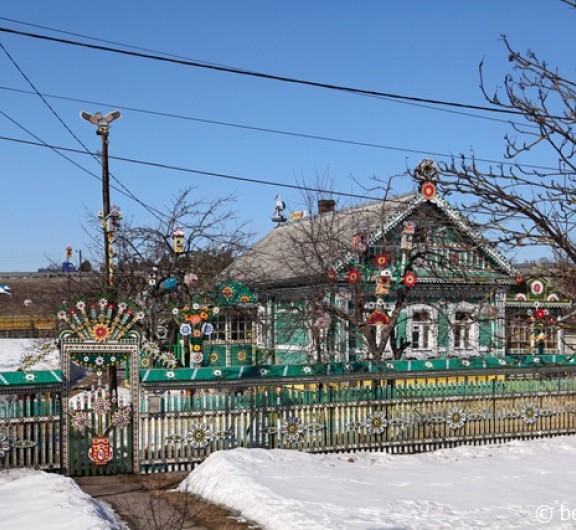
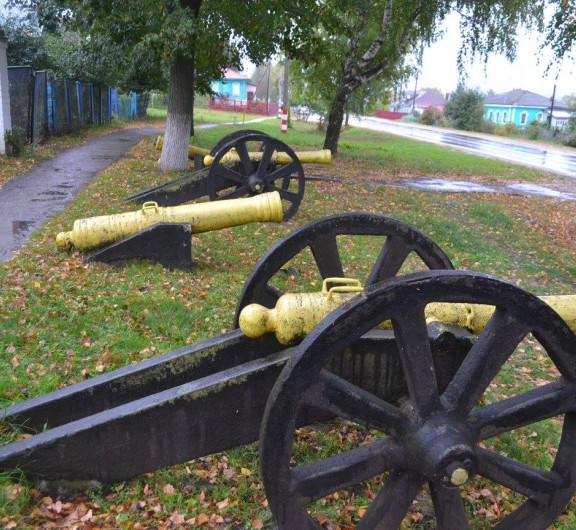
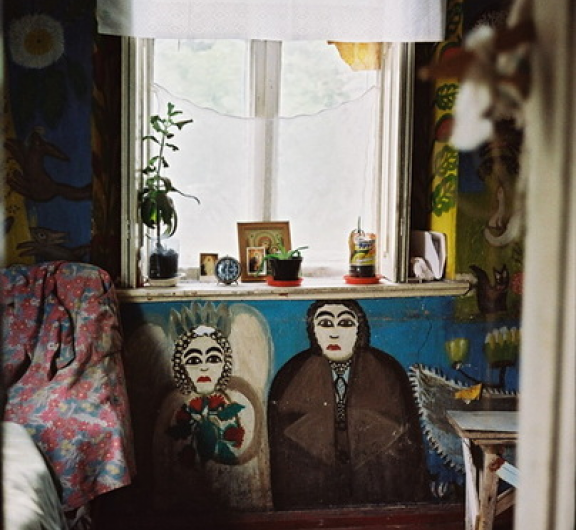
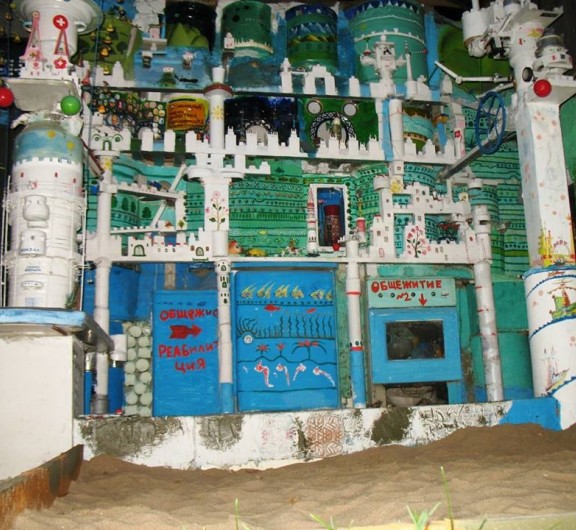

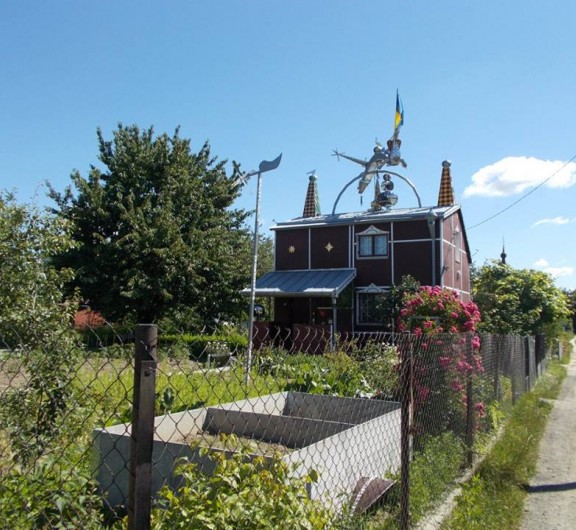

Post your comment
Comments
No one has commented on this page yet.